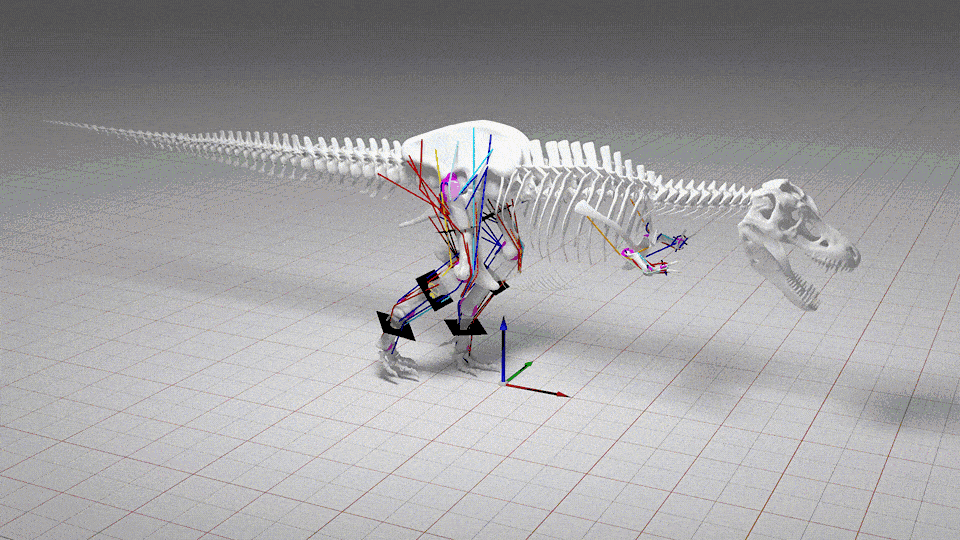When you buy through links on our site , we may earn an affiliate delegacy . Here ’s how it cultivate .
The Tyrannosaurus rex phratry tree just catch a picayune bigger . A newfound relative ofTyrannosaurus rexwas a small , and more graceful , carnivore than its direful cousin , but it run around some bizarre features , include a automobile horn and a longsighted snout .
The newly - describedT. rexcousin , described in the Oct. 5 issue of the journalProceedings of the National Academy of Sciences , is namedAlioramus altai . The exceptionally well - preserve dodo sheds light on a antecedently ill realize genus of tyrannosaurs and a new suite of version for meat eating .

Alioramus altaias it might have looked when it was alive during the Cretaceous.
" This spectacular fossil enjoin us that there is a lot more anatomical and ecologic variety in tyrannosaur than we previously thought , " say Stephen Brusatte , a grad student affiliate with the American Museum of Natural History who help discover the fogy . " Not all tyrannosaurs were megapredators adapted for stalking and dismembering large prey . Some tyrannosaurs were small and slender . Compared toTyrannosaurus , this new animal is like a ballerina . "
The announcement comes just a few weeks after the plus of another midget member to the tyrannosaurus family , theearlierRaptorex kriegsteini .
Family tree diagram

Tyrannosaurs are bipedal predators that lived at the end of the Cretaceous ( from 85 million years to just about 65 million years ago ) . One subfamily from North America includesAlbertosaurusandGorgosaurus , while the other subfamily bridge over Asia and North America and includesTyranosaurus , Tarbosaurus , andAlioramus .
BothT. rexandTarbosaurusare signally like , even though they populate on different Continent ; both were marauder with massive jaws and thick teeth that could crunch through bones . In fact , sting mark have been found on some fossil that were prey .
Until now , Alioramuswas known only from fragmentary fossils that were concisely draw decennary ago by a Russian palaeontologist , and it has long been debate whether Alioramus was a right tyrannosaur , a more primitive cousin-german , or perhaps a juvenileTarbosaurus .

The unexampled specimen and specie , A. altai , was found on a 2001 Museum expedition to the Gobi Desert of Mongolia led by Mark Norell , Chair of the Division of Paleontology at the Museum , and Michael Novacek , elderly Vice President and Provost of the Museum . In fact , it was find at the same site as aTarbosaurusfossil .
But although its skeleton is anatomically similar to this expectant relative , A. altaiis half the size ; the reconstructed sizing is about 810 pounds ( 369 kilograms ) .
Co - existing body type

The fogey ’s skull is the real standout : Although this dinosaur was carnivorous , the teeth are slender , the skull has small and weak muscle attachments , and has a foresightful snout with eight horns that were probably about five inches in distance — features never seen in a Tyrannosaurus rex before .
Analysis of the braincase ties the new mintage closely to Tyrannosaurus rex . CT scan of the brain by study co - author Gabe Bever , also of the museum , show the large air sacks , huge olfactory bulbs , and the small-scale interior auricle expected for a tyrannosaur .
" This dodo reveals an entirely newfangled body case among tyrannosaurs , a mathematical group we think we understood passably well , " Norell enjoin . " The unlike body forms probably allowedAlioramusandTarbosaurusto coexist . "

The different skull structures probably meant that the two types of tyrannosaur had different feeding use .
" A. altaiprobably feed other than from its larger cousin , go for smaller quarry because it could not bray through bone like its larger relatives , " Brusatte said .
Another co - author , Gregory Erickson , of Florida State University , analyzed the microstructure of the ivory to decide that this fauna died as a nine year old , essentially a teen at 85 percent of its grownup size of it .

The report of the fossil was supported by the National Science Foundation .













